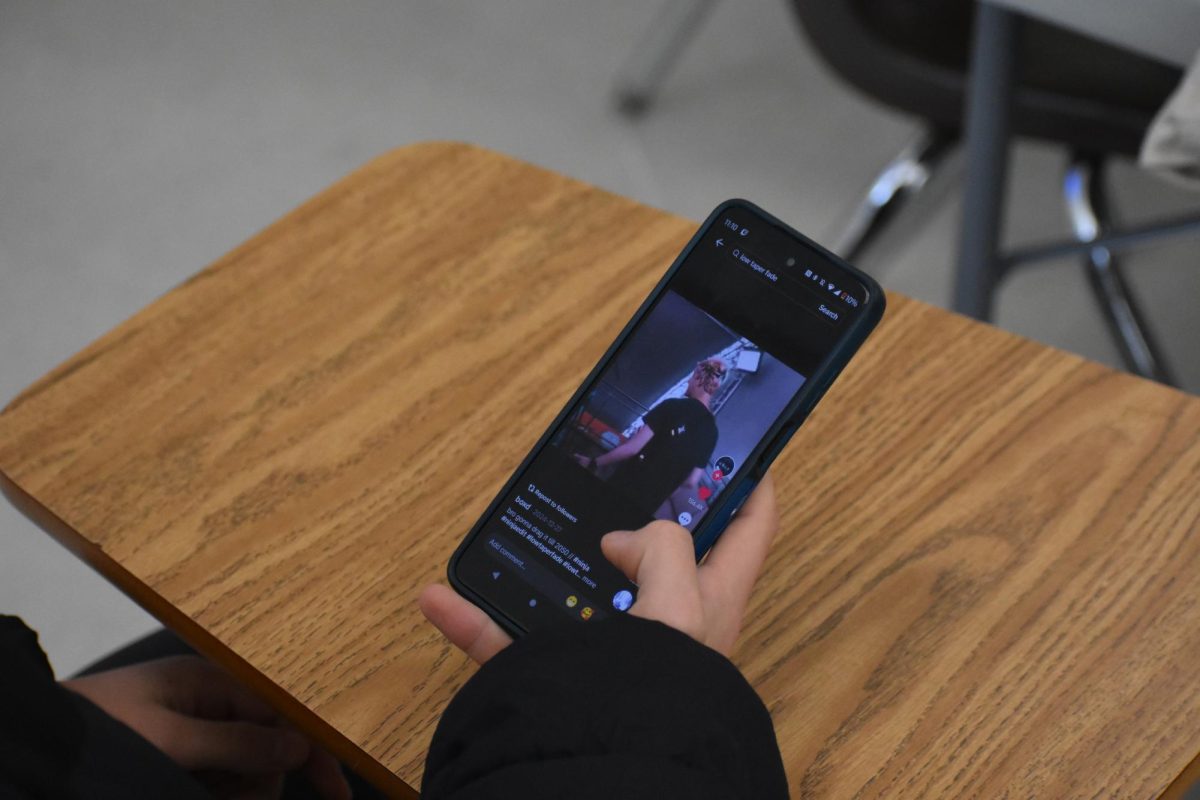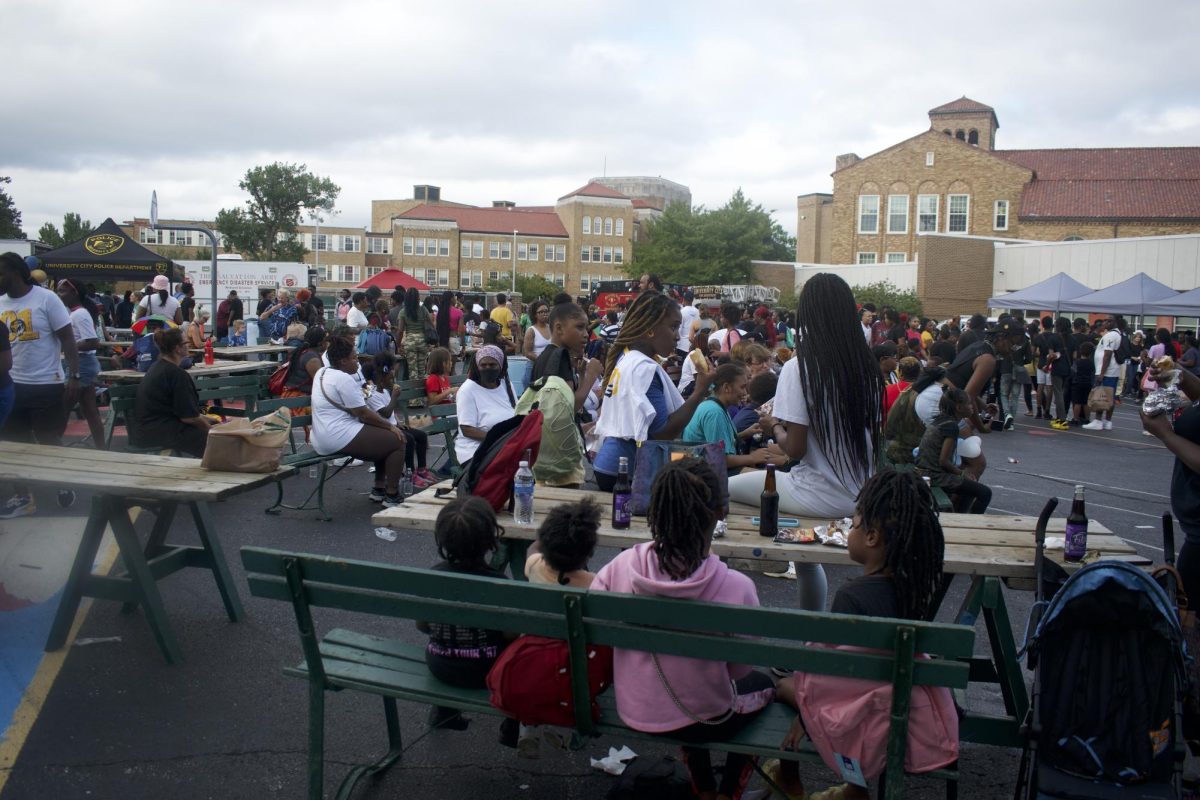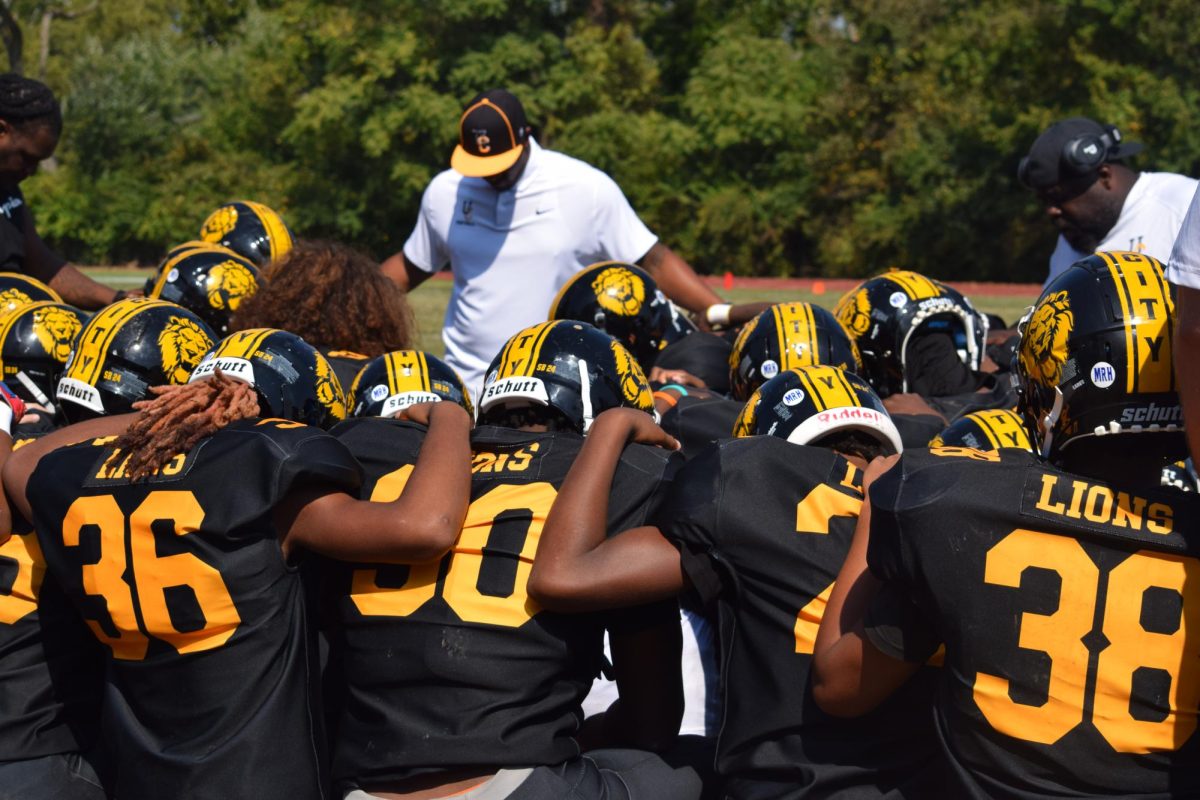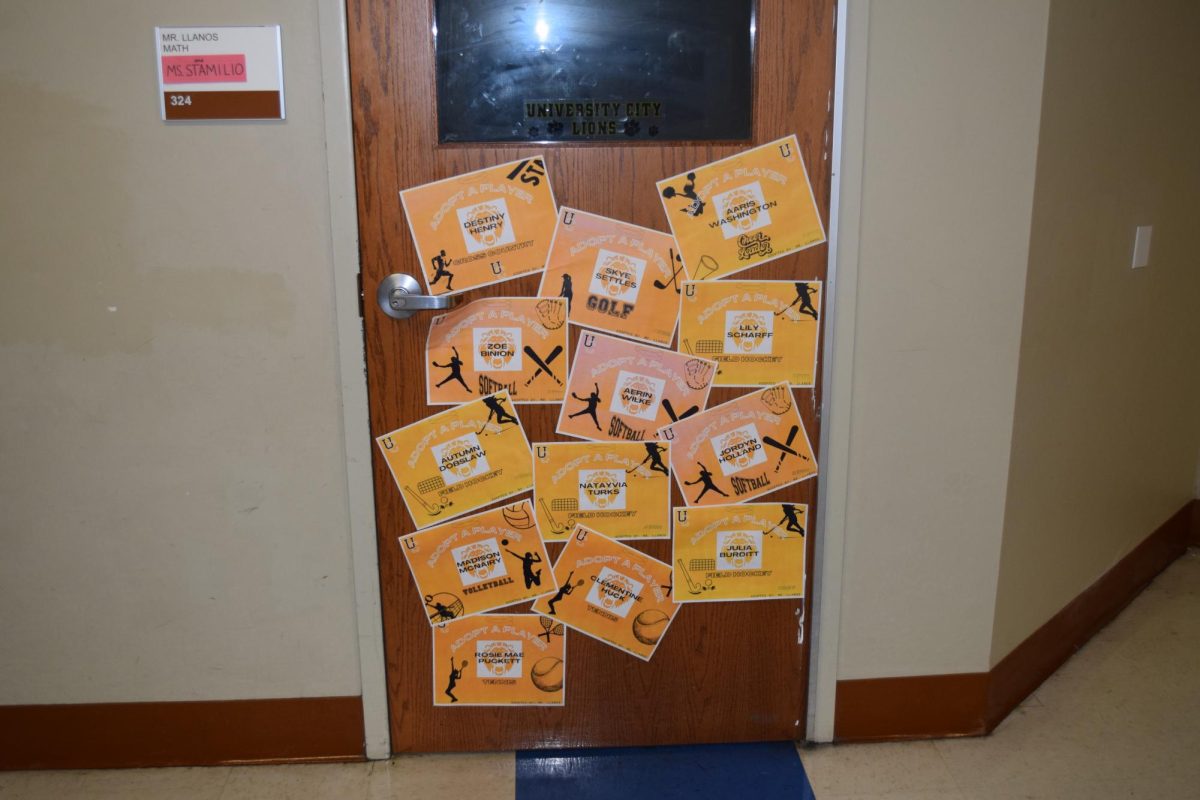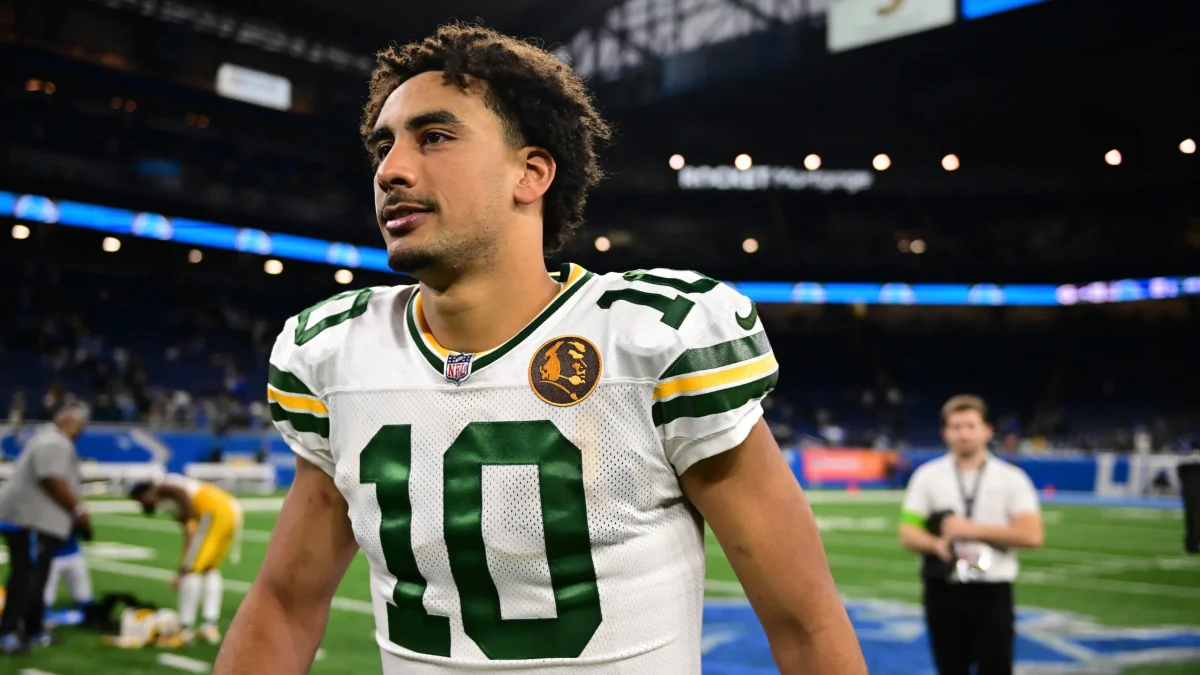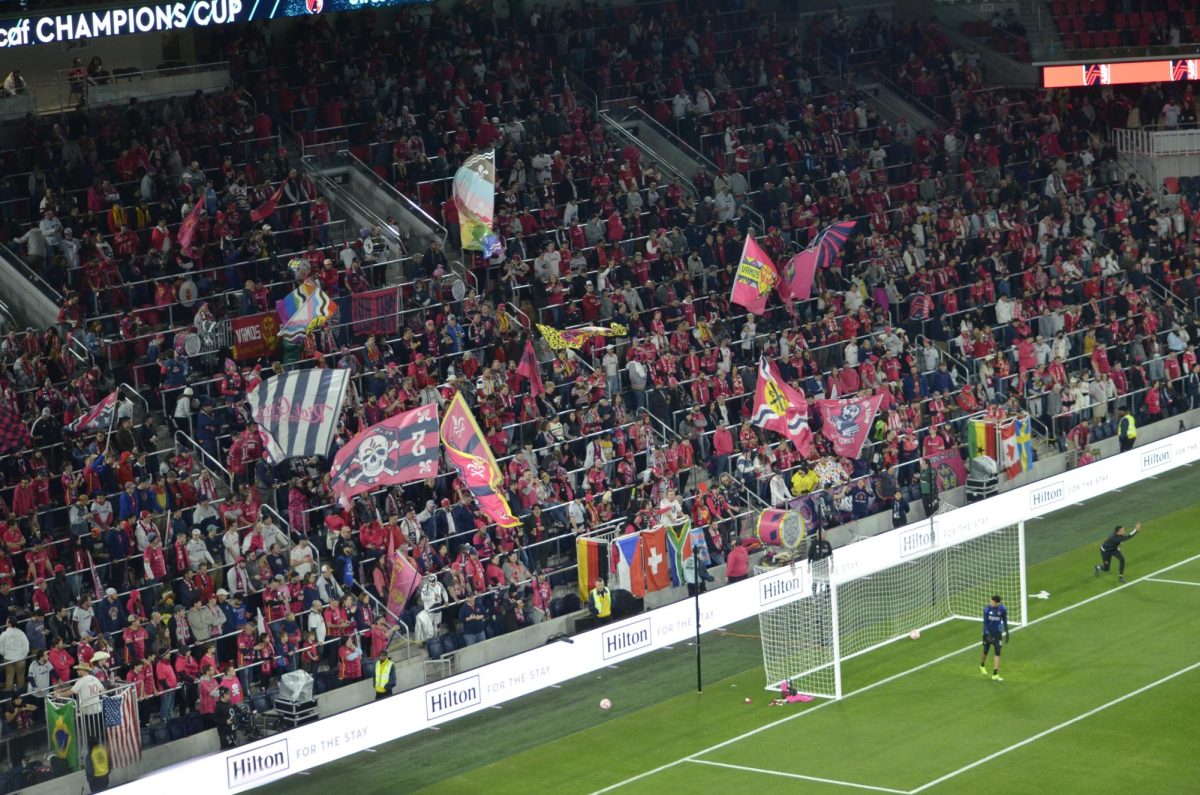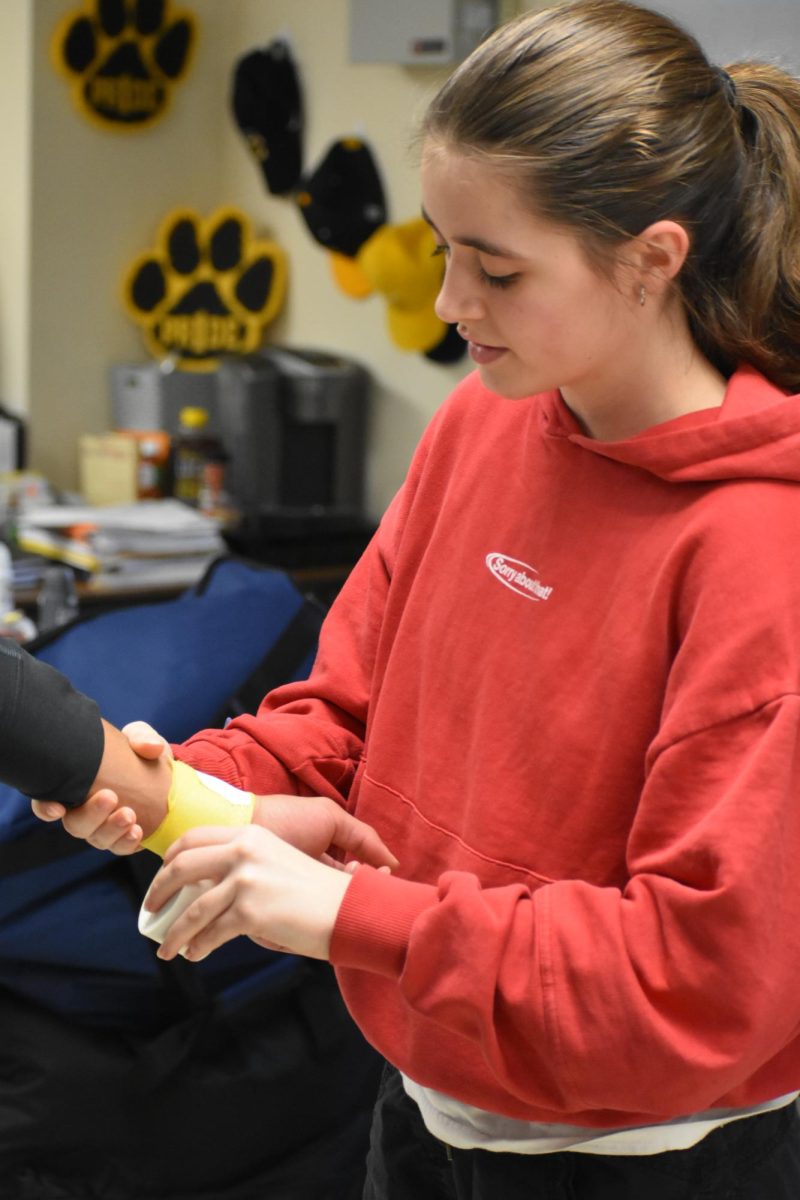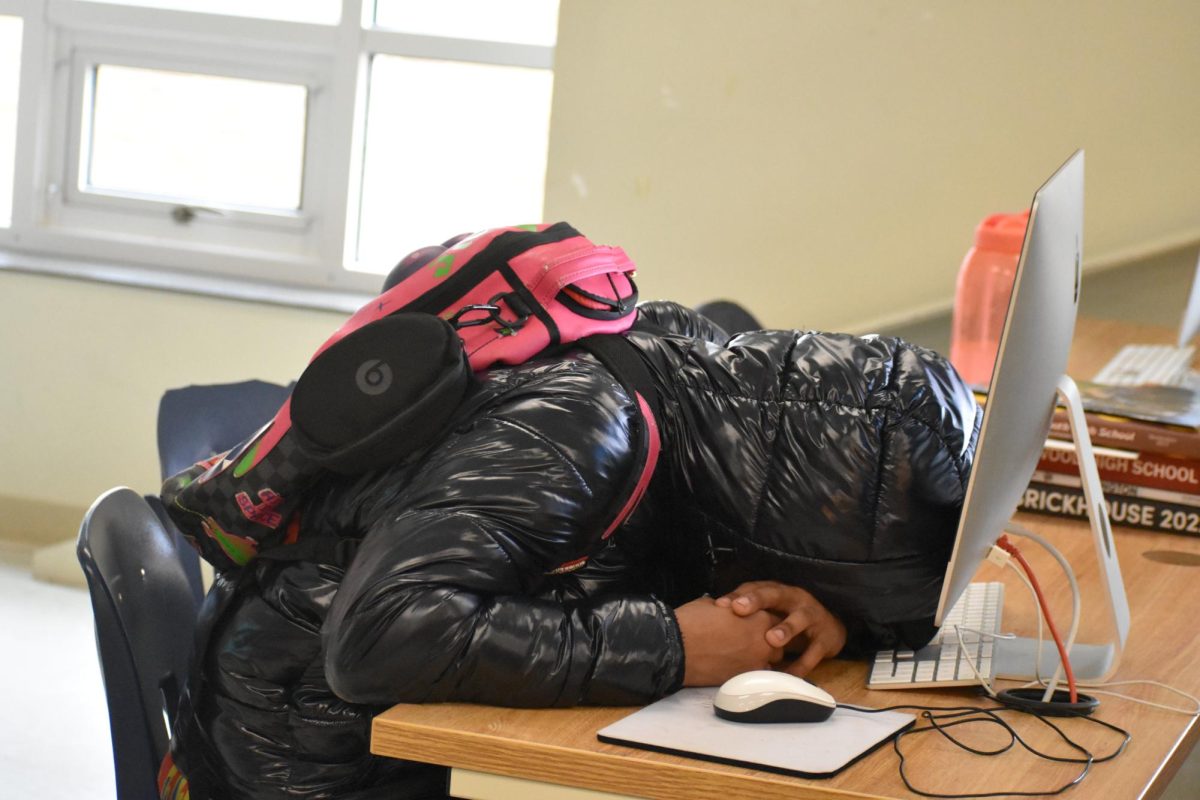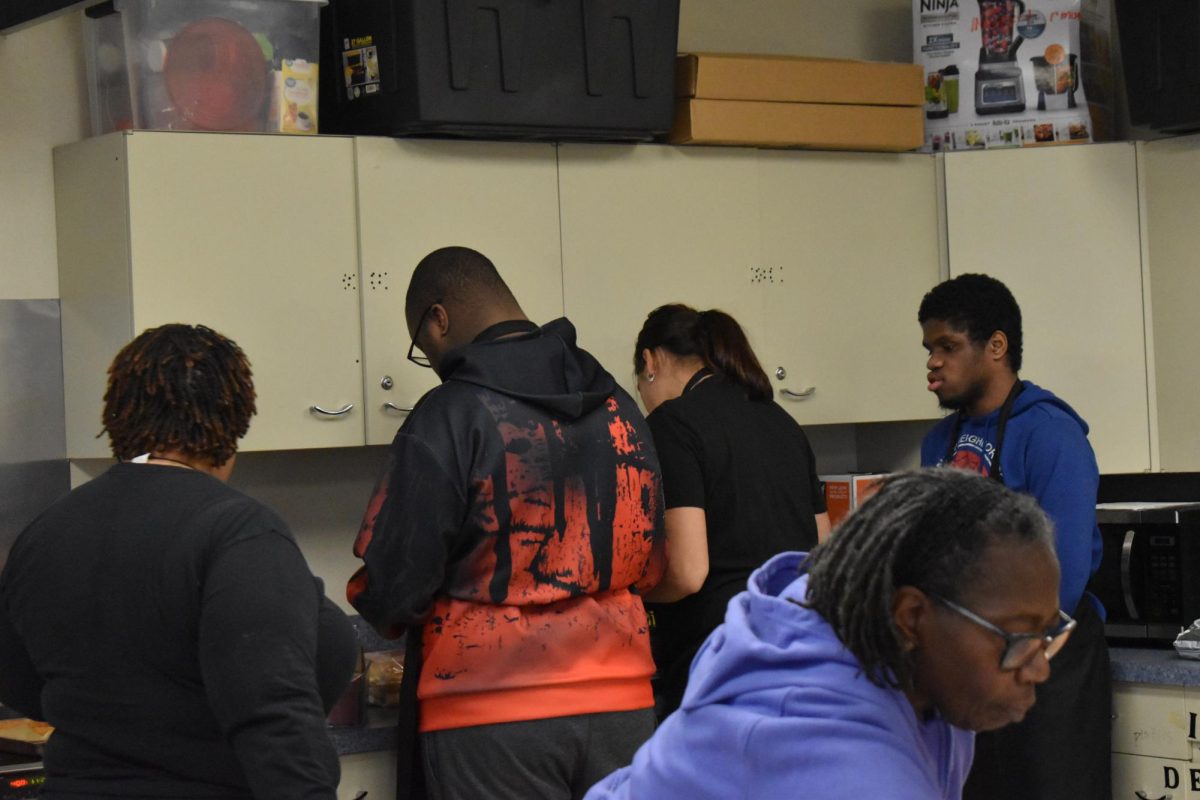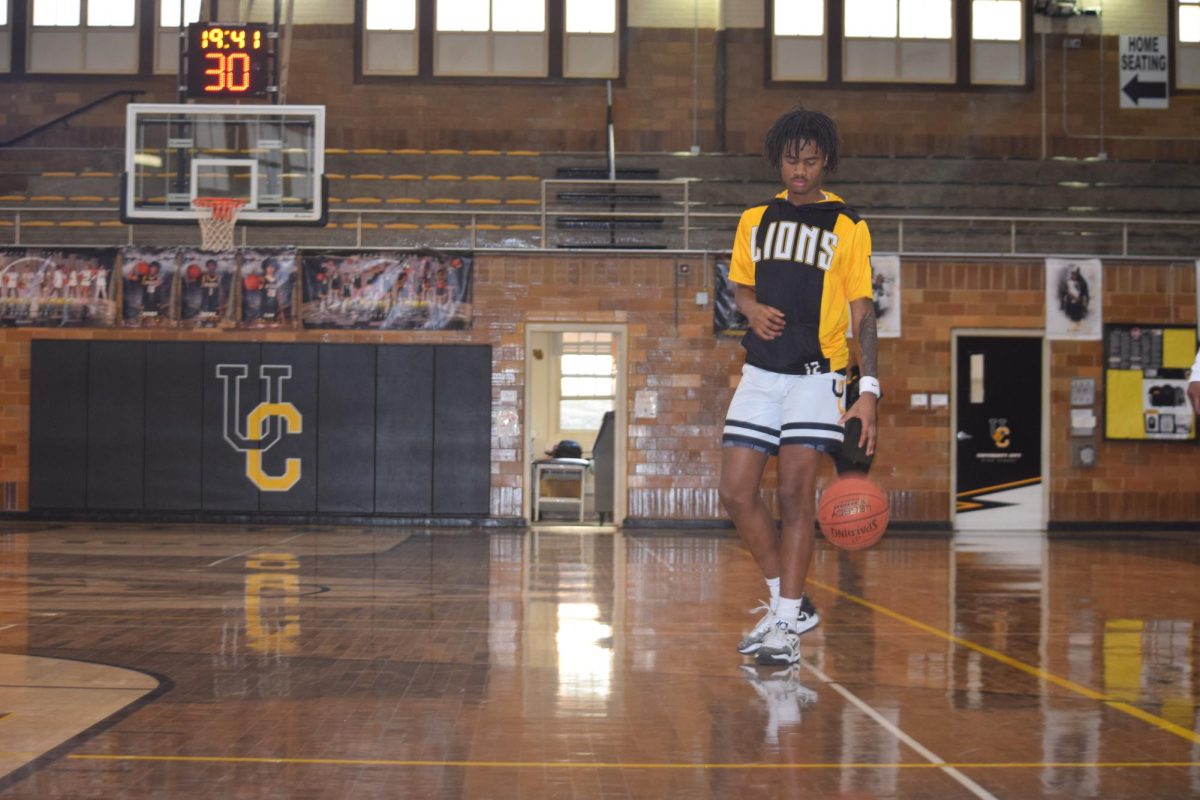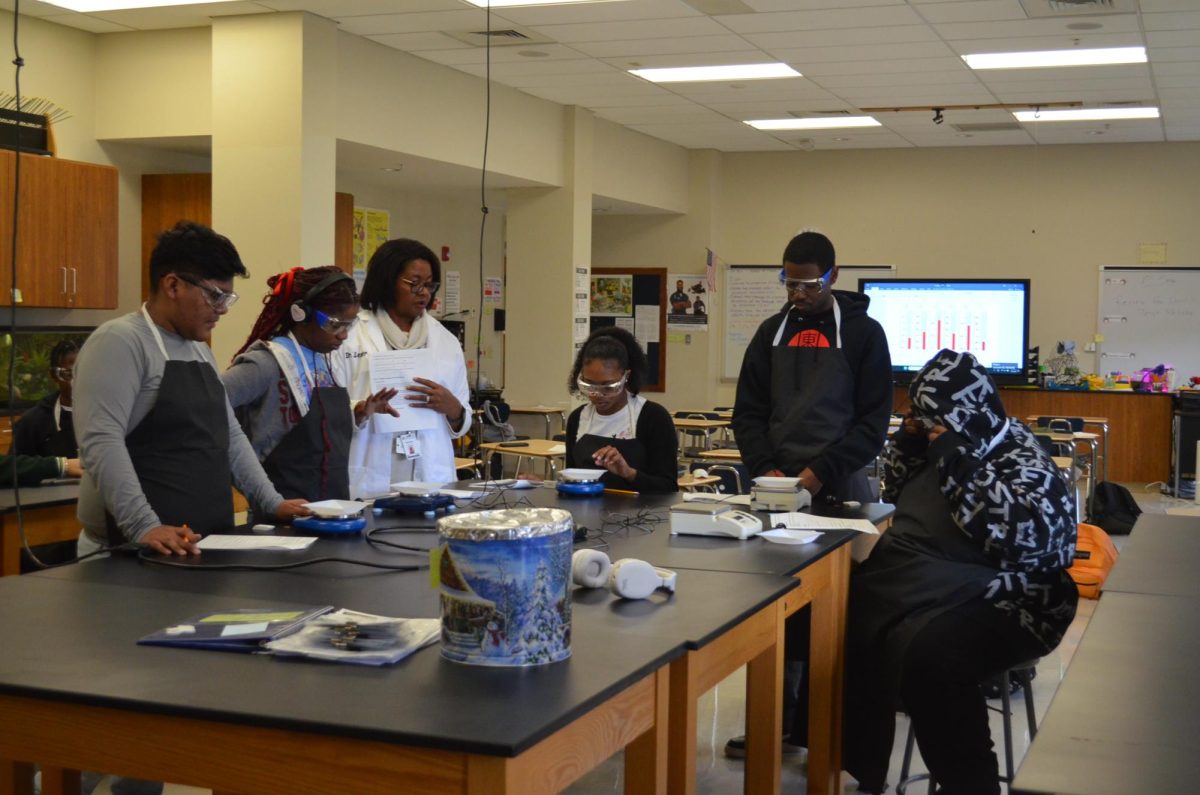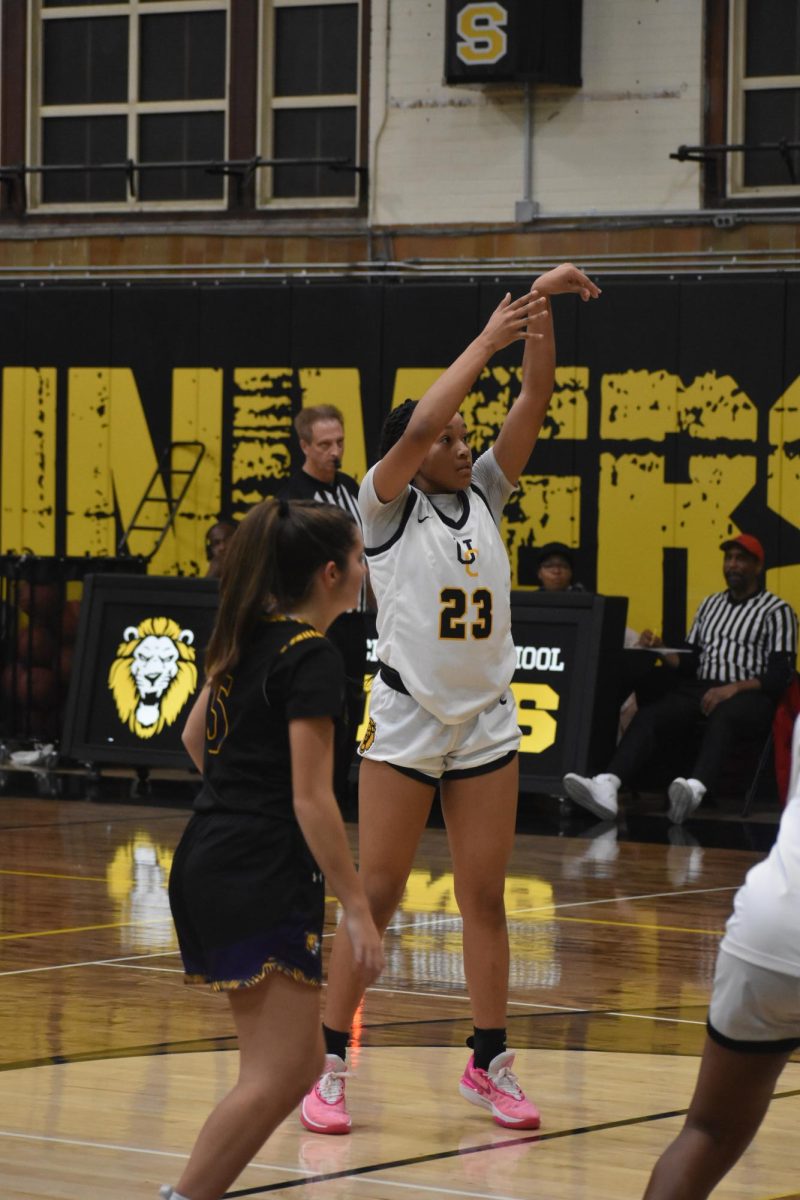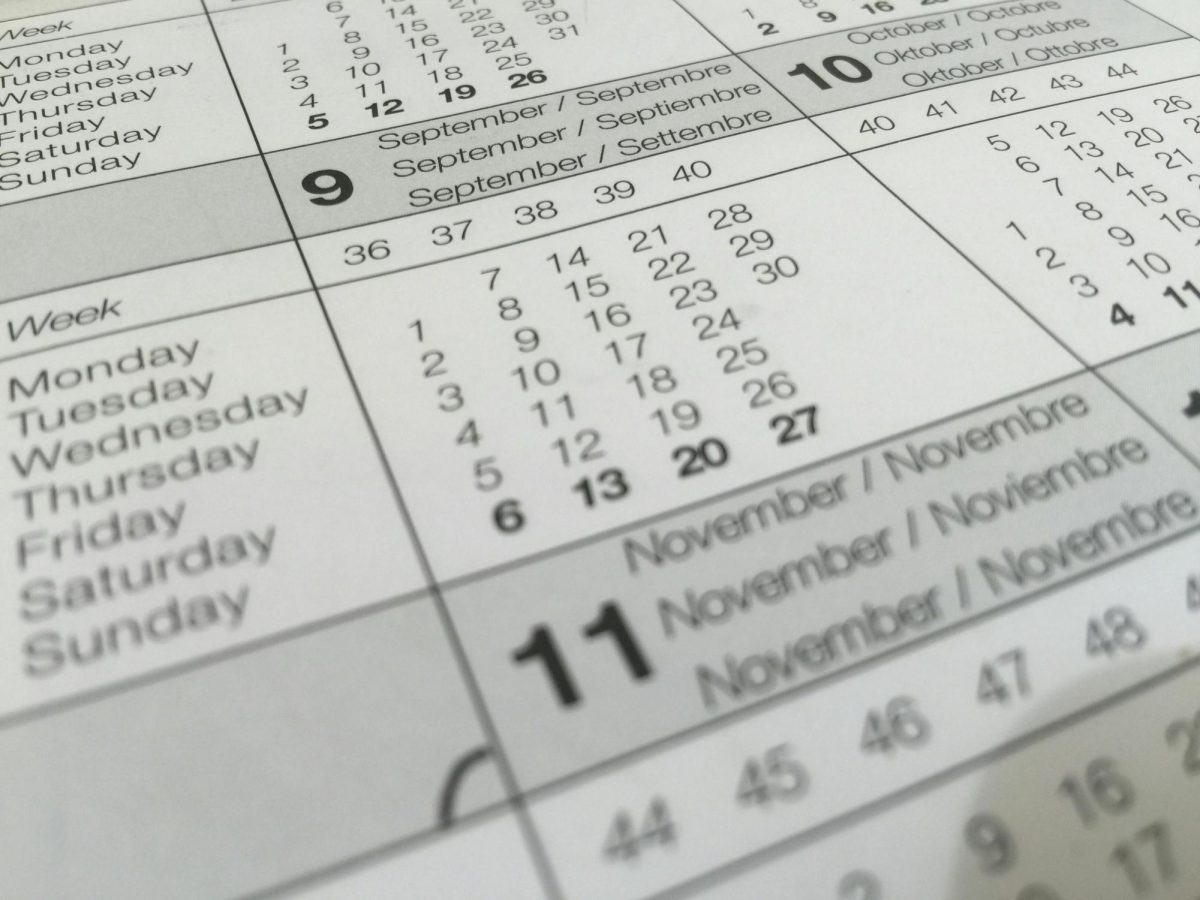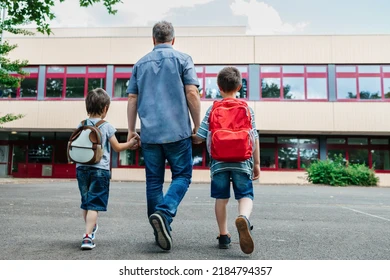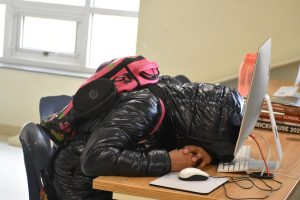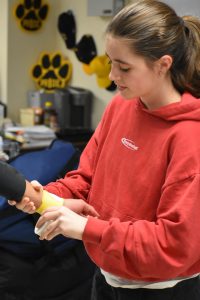Intruder drills just part of school life in age of increased mass shootings in schools
January 28, 2019
Multiple gunshots fired in the hallway. Teachers barricading the doors. People hiding in closets. This may sound like the climax of an action movie, but it’s actually just another day at U. City. On a weekday where students were given the day off, the entire staff was in the building, participating in a school shooting simulation led by Tier One Tactical Solutions.
Brian Ashley, social studies teacher, participated in the drill. He explained that there were multiple stages of the four-hour training.
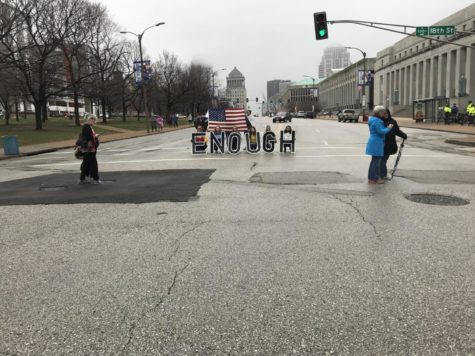
“In the first part, we were in a classroom and informed that there was an active shooter in the building,” Ashley said. “We worked to try and barricade ourselves in.”
From there, another simulation was run, where teachers had to decide what to do in the event of a shooting. Gunshots rang out in the hallway.
“We had the option to either barricade ourselves in or get out of the building,” Ashley said.
Towards the end of the training, there was one final simulation, consisting of an active shooter in the classroom.
“We were in our classrooms, and someone started firing a [starter] gun,” Ashley said. “We had to find something to throw at him, and then get behind a desk.”
When students across America walk into school, they’re supposed to feel safe and secure. But in 2018, this isn’t always the case. With school shootings becoming more and more prevalent, students and teachers alike feel as though their safety is being jeopardized.
According to the organization Everytown for Gun Safety, as of Dec. 1, the United States has seen 86 shootings on school grounds in the past year alone. That statistic hits close to home for many students, and has some wondering how safe they really are in school.
Jayla Fitch, junior, worries that the growing number of shootings impacts how parents feel about their children’s safety.
“I think it’s making people kind of hesitant about sending their kids to high schools, or just American schools in general,” Fitch said. “Because guns are so easily accessed, there can be a shooting anywhere.”
As part of the generation that grew up post-Columbine, Fitch recalled the 2012 Sandy Hook Elementary School massacre, which occurred when she was in fifth grade. She explained that since then, the country has seen many more school shootings, and she has noticed a shift in the way people view the issue.
“Now, as we’re growing older, we’re realizing that this is more of a problem,” Fitch said. “There could be a shooting at recess. There could be a shooting at lunch. There could be a shooting anywhere.”
Last spring, many students participated in a National School Walkout on the 19th anniversary of Columbine in support of stopping school violence. One of the organizers of the local event was senior Rowan Hoel, who has been very outspoken on the issue of gun violence and its impact on U.S. schools. Her activism was sparked by the many school shootings the U.S. has recently endured.
“I hate that a school shooting had to make me more aware of gun violence that happens daily, but I think that it forced me to get more involved,” Hoel said. “The mass shootings we’ve seen over the past few years have shone a light on gun violence.”
Hoel explained that the frequent shootings have changed the way she feels in school.
“Now, [school shootings] are always kind of in the back of my head,” Hoel said. “But at the same time, you can’t live in fear of that happening.”
When it comes to making schools safer, Hoel feels there are actions our country can take to protect our students.
“I think common sense gun control is a pretty obvious one,” Hoel said. “It’s ridiculous how easily accessible guns are in this country.”
Some teachers have voiced their concerns on the issue as well. Peggy Halter, English teacher, thinks it’s unfair that students have to live in a world where school shootings are a constant threat.
“Children should never have to go to school worrying about becoming a victim of gun violence,” Halter said.
Halter believes the school is being proactive in preventing gun-related mayhem, but that it could take more action to fully ensure the safety of students.
“I feel as though safety in our school is being adequately addressed by both the district and building leaders,” she said. “However, I have always thought that adding an extra layer of security would make us just a bit safer, buy a little more time, or give us advanced warning in the event of an active shooter.”
During the active-shooter simulation, Michael Peoples, principal, participated alongside his fellow administrators and staff. He explained the logistics of the training drills.
“There was a team of [off-duty police] officers who came over to deliver the training,” Peoples said. “The training started off with a presentation. It provided some data on school shootings and police response time.”
Peoples said that from there, the staff put their knowledge to the test in a school shooting simulation.
“We were separated into groups, placed in classrooms, and told that we would be participating in some active shooter training that was very realistic and intense,” Peoples said. “Once we completed those, we were moved upstairs, and the main office went through a situational drill.”
Peoples said he feels a great deal of pressure as the head of the building, and an obligation to keep his students safe.
“In school shootings, adults are ultimately responsible for the safety of our students,” Peoples said. “As the building principal, I am responsible for everyone, both staff and students. The unfortunate reality is that school shootings have occurred, and my heart’s desire is that nothing like that would ever occur at any point of my career.”

